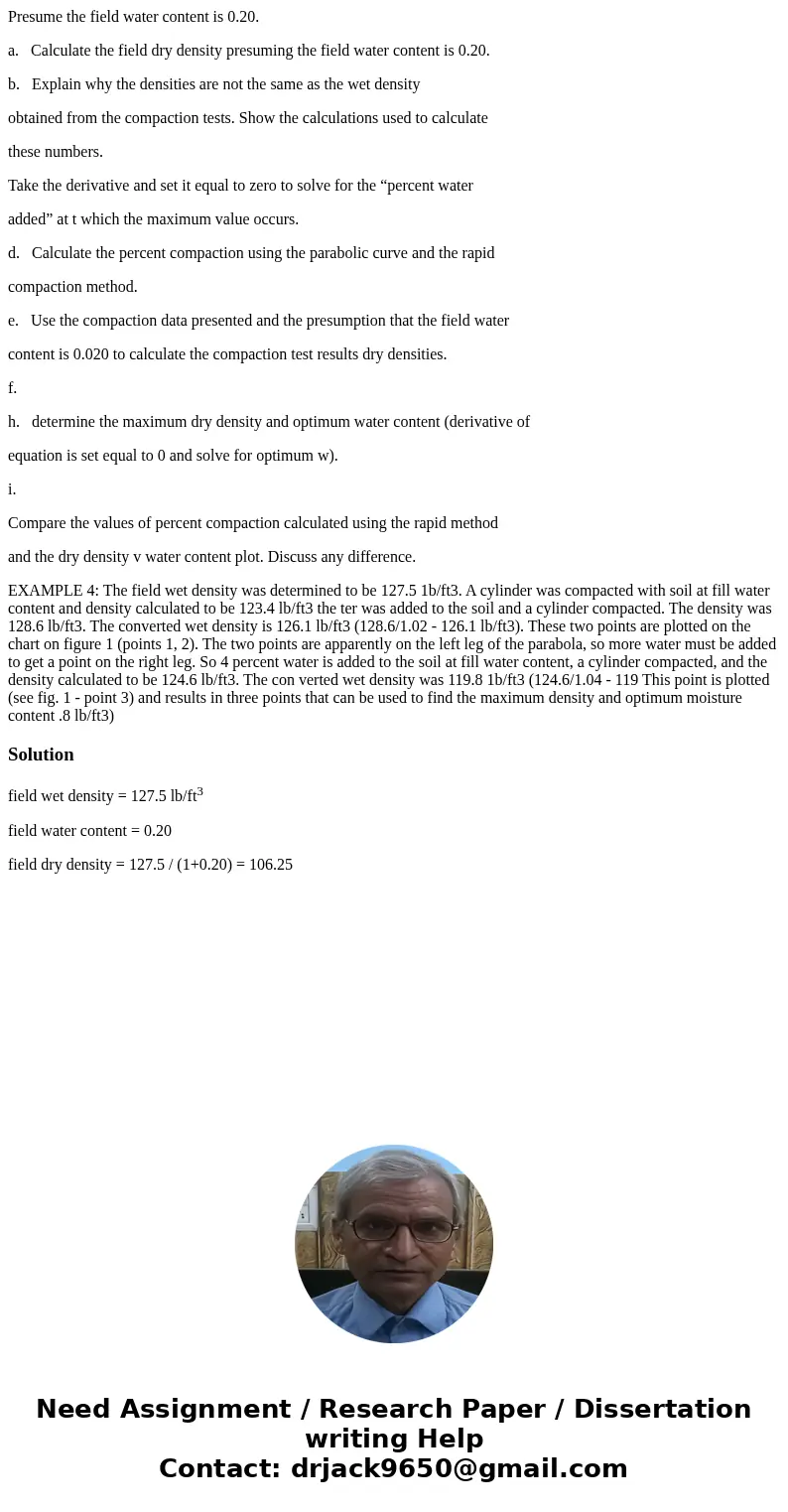Presume the field water content is 020 a Calculate the field
Presume the field water content is 0.20.
a. Calculate the field dry density presuming the field water content is 0.20.
b. Explain why the densities are not the same as the wet density
obtained from the compaction tests. Show the calculations used to calculate
these numbers.
Take the derivative and set it equal to zero to solve for the “percent water
added” at t which the maximum value occurs.
d. Calculate the percent compaction using the parabolic curve and the rapid
compaction method.
e. Use the compaction data presented and the presumption that the field water
content is 0.020 to calculate the compaction test results dry densities.
f.
h. determine the maximum dry density and optimum water content (derivative of
equation is set equal to 0 and solve for optimum w).
i.
Compare the values of percent compaction calculated using the rapid method
and the dry density v water content plot. Discuss any difference.
EXAMPLE 4: The field wet density was determined to be 127.5 1b/ft3. A cylinder was compacted with soil at fill water content and density calculated to be 123.4 lb/ft3 the ter was added to the soil and a cylinder compacted. The density was 128.6 lb/ft3. The converted wet density is 126.1 lb/ft3 (128.6/1.02 - 126.1 lb/ft3). These two points are plotted on the chart on figure 1 (points 1, 2). The two points are apparently on the left leg of the parabola, so more water must be added to get a point on the right leg. So 4 percent water is added to the soil at fill water content, a cylinder compacted, and the density calculated to be 124.6 lb/ft3. The con verted wet density was 119.8 1b/ft3 (124.6/1.04 - 119 This point is plotted (see fig. 1 - point 3) and results in three points that can be used to find the maximum density and optimum moisture content .8 lb/ft3)Solution
field wet density = 127.5 lb/ft3
field water content = 0.20
field dry density = 127.5 / (1+0.20) = 106.25

 Homework Sourse
Homework Sourse